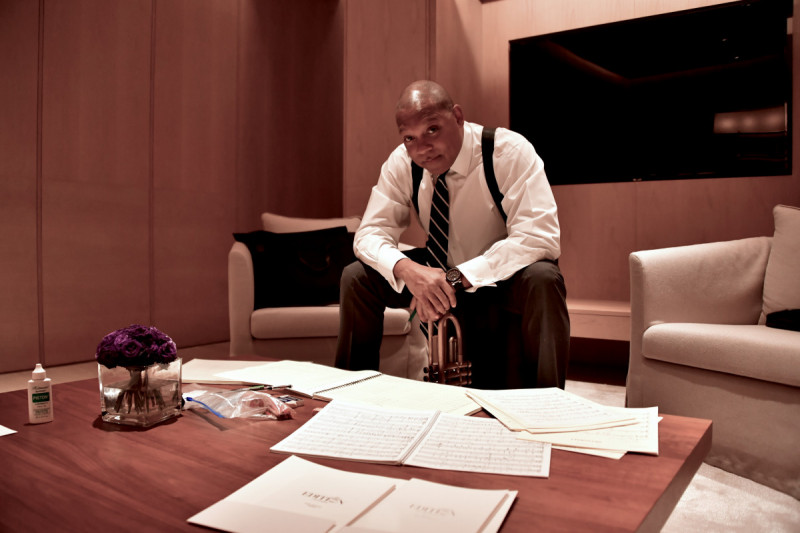Wynton’s Top Ten: Heroic Cultural Moments

Introducing the latest installment of the new Jazz at Lincoln Center series titled "Wynton’s Top Ten," a monthly listicle curated by Wynton Marsalis. This month, Wynton shares his “Top Ten” picks for "Heroic Cultural Moments" and his annotations behind each selection.
(in no particular order)
1. Harriet Beecher Stowe’s Uncle Tom’s Cabin
Uncle Tom’s Cabin, originally published in 1852, opened the eyes and minds of a nation that was largely calloused to human suffering on an unprecedented scale. This book sold more than 10,000 copies the first week it was released and 300,000 in the first year of publication. Upon meeting Ms. Stowe, Abraham Lincoln famously said, “So you are the little woman who wrote the book that started this Great War.”
2. Duke Ellington’s Black, Brown and Beige
A technically superior celebration of Americana from the perspective of the supreme musical master of those who were denied freedom. In the depth of World War II, a bold, optimistic vision told in the elevated language of the blues in America’s premier concert hall to overwhelming audience response, but to the naysaying of condescending “musical experts” who would rather have him remain on the plantation.
3. Pablo Picasso’s “Guernica”
Picasso’s “Guernica” was a formidable use of transcendent skill to alert the world about what was coming. A direct and brutal indictment of war, it debuted as the centerpiece of the Spanish Pavilion in the 1937 World’s Fair. Initially written off as ‘the dream of a madman’, it would become known as what it is…urgent, powerful, unapologetic and a risky preemptive on a rising power that would at a future point also control Picasso’s life.
4. Walt Whitman’s Leaves of Grass
An epochal collection of poetry from the genius of Walt Whitman officially published in 1855, addresses head-on issues of race, gender, class and sexuality that we still run from today. Largely self-taught, he was someone from another planet dropped down on earth to elevate consciousness. And, ironically, actually became a national icon. He was a strange combination of extreme gentleness and unbelievable toughness.
5. Benny Goodman’s “1938 Carnegie Hall Concerts”
A completely sold out historic night of modern American music. In the shadow of Nazi Germany and under the rigid racial prejudice and segregation of the United States, Benny Goodman brought the fully integrated world of jazz to a stage that had never permitted the music. He demanded time to rehearse on that stage, and then, pulled off a stellar, committed and comprehensive example of what Swing could do to transform our nation.
6. Marvin Gaye – What’s Going On (album)
“What’s Going On” — Well, you had to be there in 1971 after the death of King and Kennedy and the devastating effects of the Vietnam War on the American neighborhood to know what it was like to walk down the street and hear this playing everywhere from barber shops to gas stations to private homes. Marvin summarized how a whole nation, regardless of perspective, continues to feel. Oh…Nixon was President.
7. Margaret Bourke-White & Erskine Caldwell ‘s You Have Seen Their Faces
This is so powerful. My words would only take away from it. Just look at the faces and everything is in there. In the struggle and pain there is something indomitable about the human proposition. It’s all over this masterpiece.
8. Alvin Ailey’s “Revelations”
He summarizes an experience that was always treated comedically or as a caricature. He showed the range, depth, beauty, power, brilliance and resilience of the spiritual tradition that took people through the entire range of human engagement from birth to rise-and-fall to death to rebirth. It is still a modern masterpiece because the truth, like belief itself, don’t get old.
9. Shostakovich’s Symphony No. 7
A supreme Master of Russian music, Shostakovich lived most of his adult life on eggshells because Stalin wrote a bad review of his opera that premiered when he was only thirty years old. Stalin’s power over life and death made every Shostakovich composition a cause célèbre. At the lowest point of Russian involvement in World War II, he reached deep into the innards the National soul to pull out this masterpiece. There are so many astounding stories about this work and its significance as a piece of resistance - they merit personal investigation.
10. Mahalia Jackson’s support of the civil right movement – on hundreds of nights
Mahalia Jackson’s support of the civil right movement on many now forgotten nights. She was a force in every way. Dr. King’s face says it all in this video
